There are many varieties of embroideries in India. This makes the handicraft culture in the country rich and vibrant. Many modern fashion designers are working on these to give them an international platform. Here is a list of 15 different embroideries from different states of the country.
Top 15 Different Embroideries Of India
1. CHIKANKARI
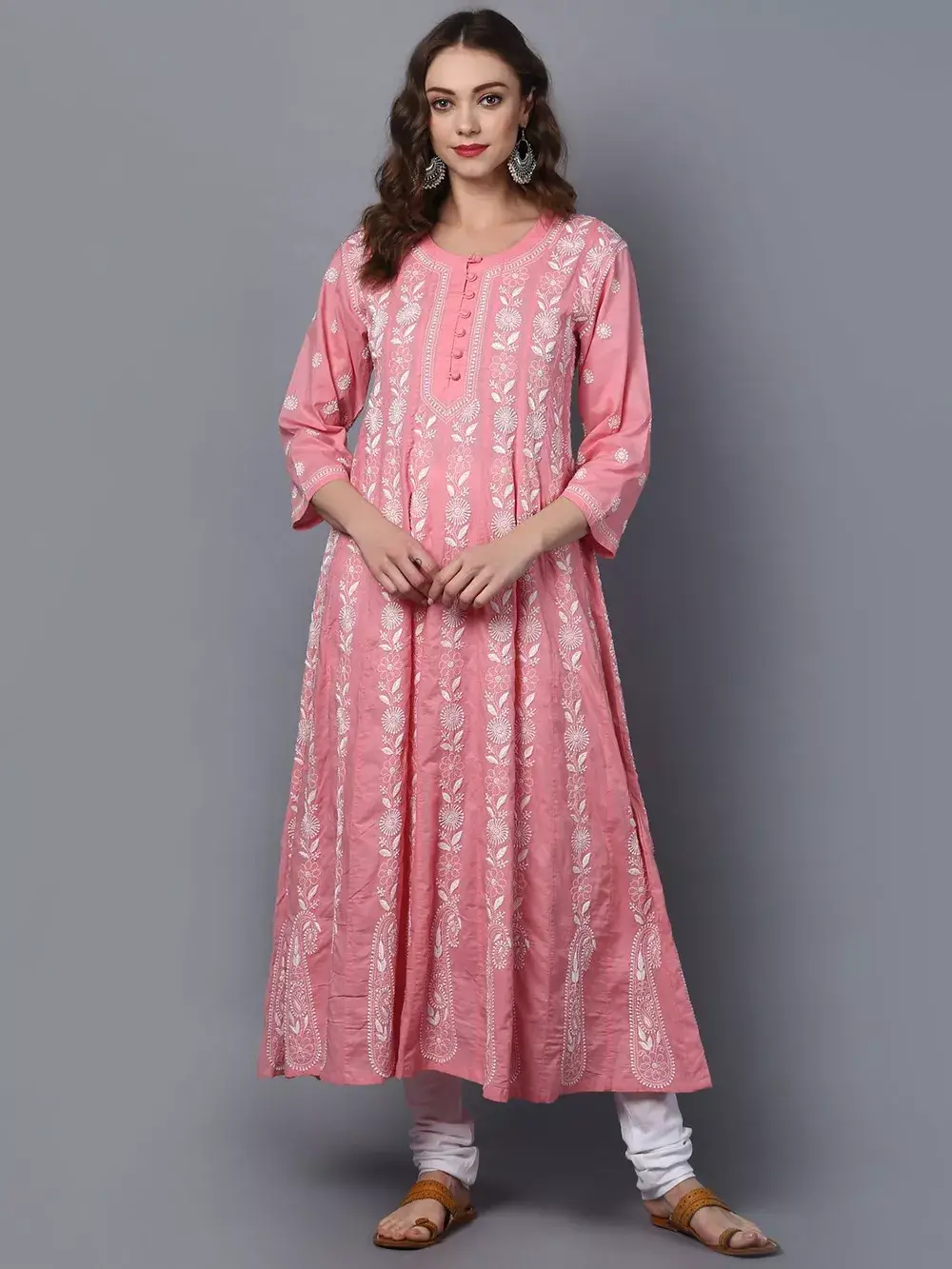
This type of embroidery is mainly produced in Lucknow, UP. At first, the pattern is created by the block printing method and then it is stitched along with the pattern. The traces of the pattern are later washed off. The chikankari embroidery is usually done by the same colour thread as the base cloth, which gives it a unique beauty and grace.
2. KANTHA
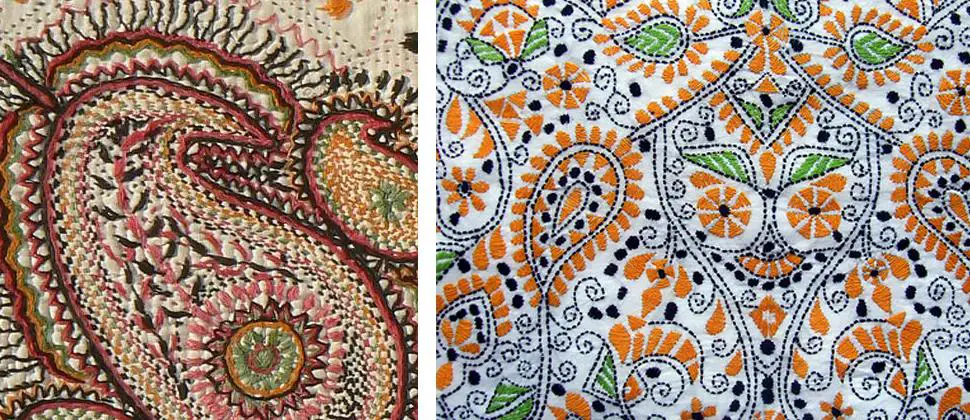
KANTHA originated in West Bengal and Orissa. The thread which is used in this embroidery is extracted from the sides of the base cloth. The main themes of this embroidery are flowers and leaves. Many ethnic designs are also embroidered. The Kantha-stitched silk saree is a very popular type of saree in west Bengal. It is one of the oldest forms of embroideries in the Indian subcontinent.
3. PHULKARI
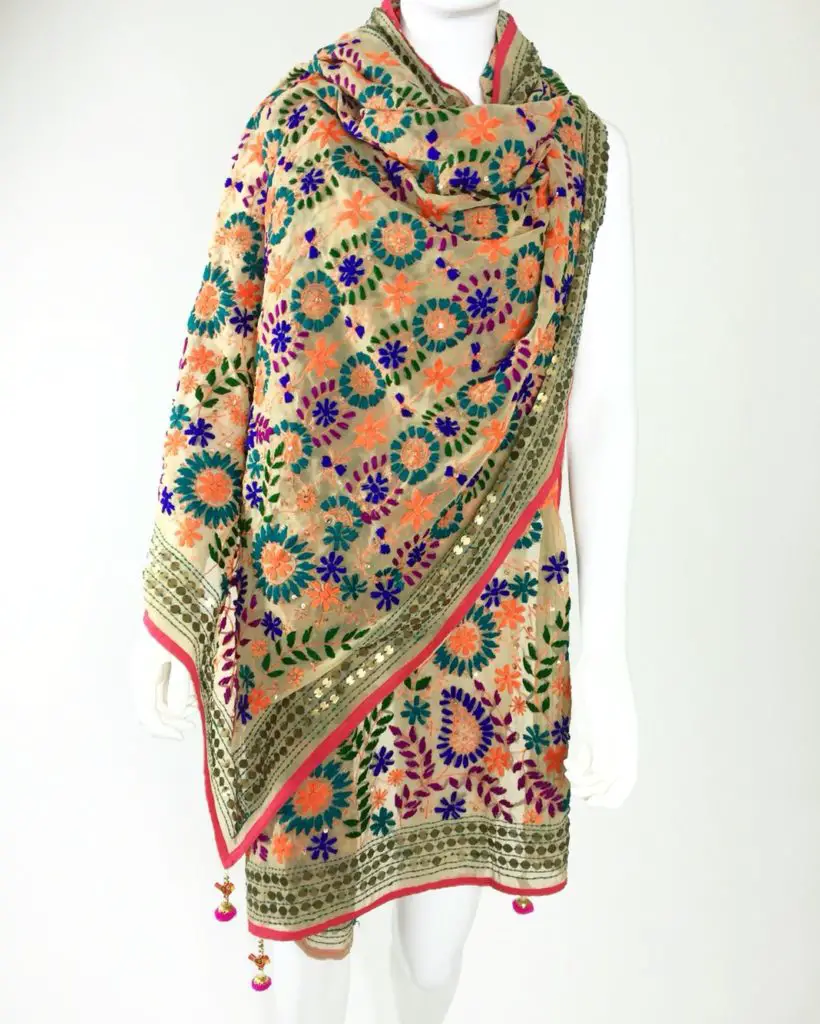
Mainly done in Punjab, this is a very famous embroidery for suits and dupattas. Bright colour threads are used on light colour base cloth in this embroidery. Phulkari embroidery is also very famous in other parts of India. Phulkari Dupatta with a plain suit is very much in trend nowadays. The first mention of this embroidery is done in Punjabi romantic folk drama Heer and Ranjha. However, it might have originated among the Jat people.
4. BAGH
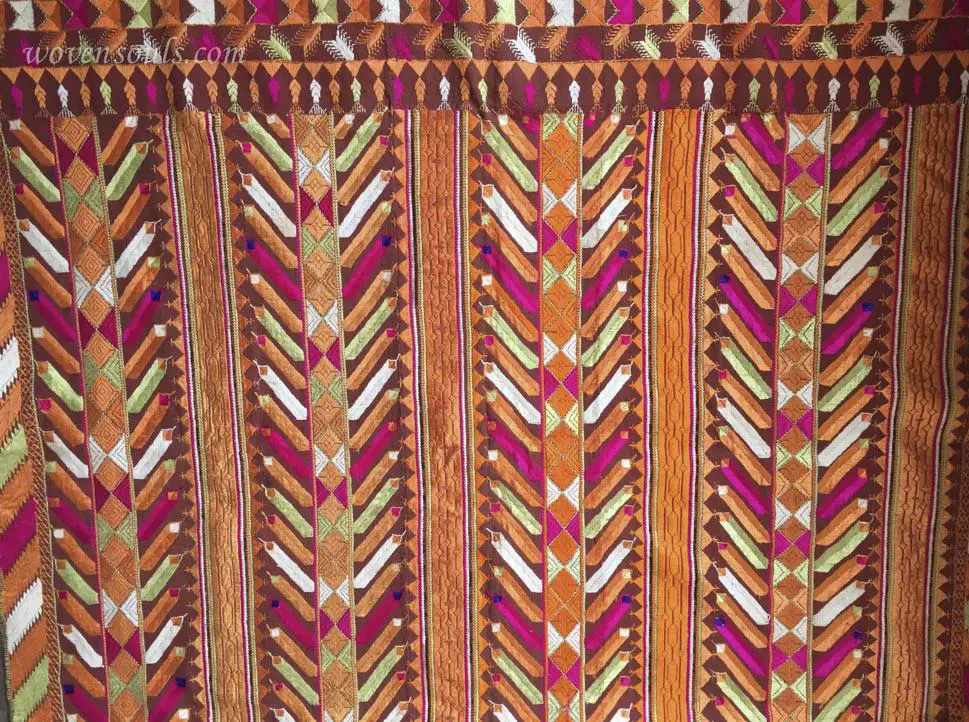
Similar to Phulkari, this Punjab-originated embroidery is spread all over the surface cloth. This is a heavy version of phulkari embroidery. This embroidery gives a very elegant look to the entire outfit.
5. ZARDOZI

Zardozi embroidery originated in Uttar Pradesh. Silver and Gold wire is used with the same polished thread in this type of embroidery. This embroidery is seen in bridal dresses in India. It has its roots in Persia and as history traces, during the Mughal rule, it came to India. Zar literally means Gold and Dozi means embroidery. But as gold is an expensive metal, Zardozi is done with metal-washed threads to make it reasonable.
6. ARI
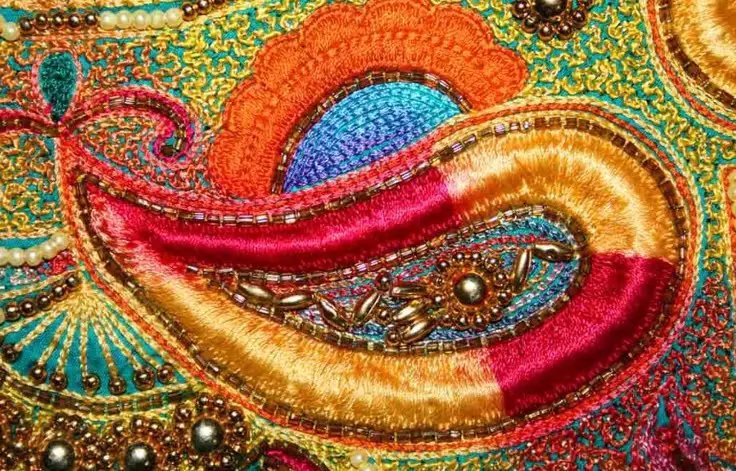
The Ari embroidery is produced in Jammu Kashmir and Gujarat. The floral motif is the main subject matter of the embroidery. The needle which is used in this embroidery is a hooked needle known as Crewel. This embroidery needs to be done with an expert hand. If decorated with nice beads and pearls, Ari’s embroidery looks very beautiful.
7. MIRROR WORK
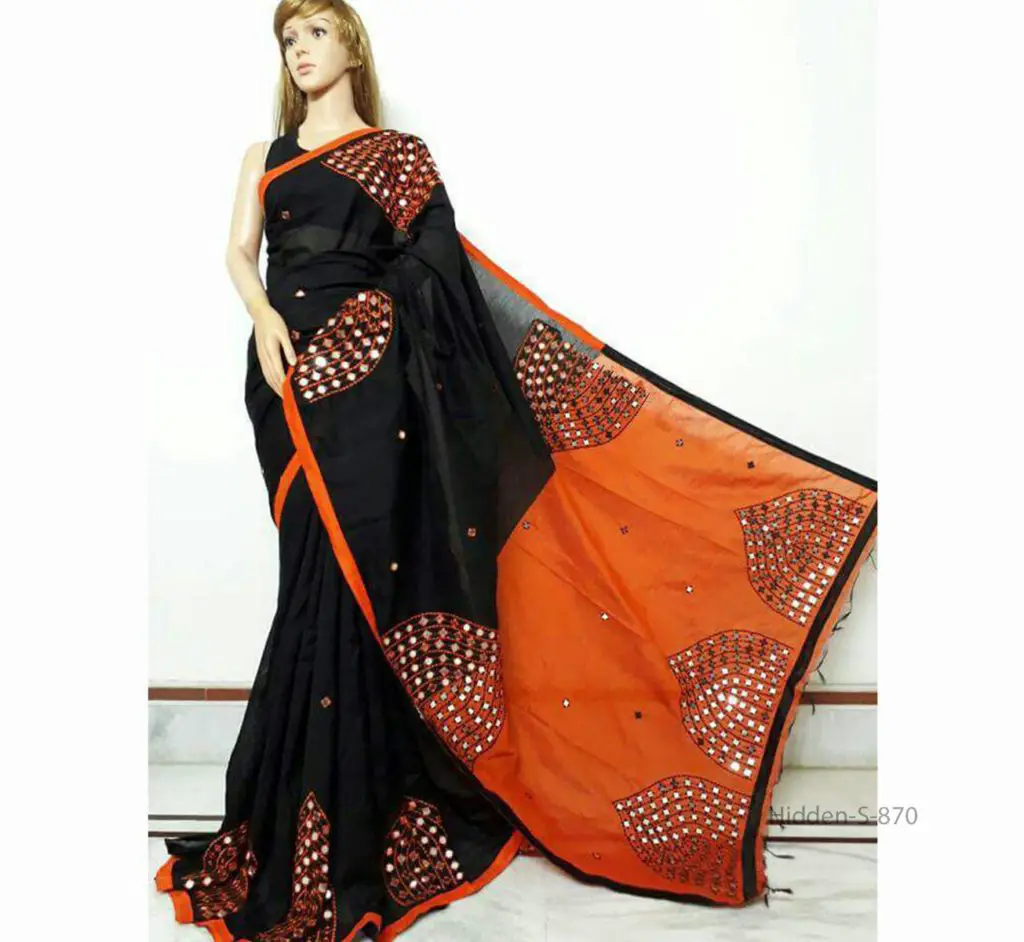
This embroidery is done in Gujarat and Rajasthan with different sizes and shapes of mirrors. In recent times, it has also been used in contemporary clothes. The mirror work is seen in Rajasthani Ghagras and sarees. Mirror work is a simple way to give that ethnic look to any western clothes like denim jackets and jeans.
Read also – Top 15 Helpful Tips For Exam Preparation
8. DHARANIYA
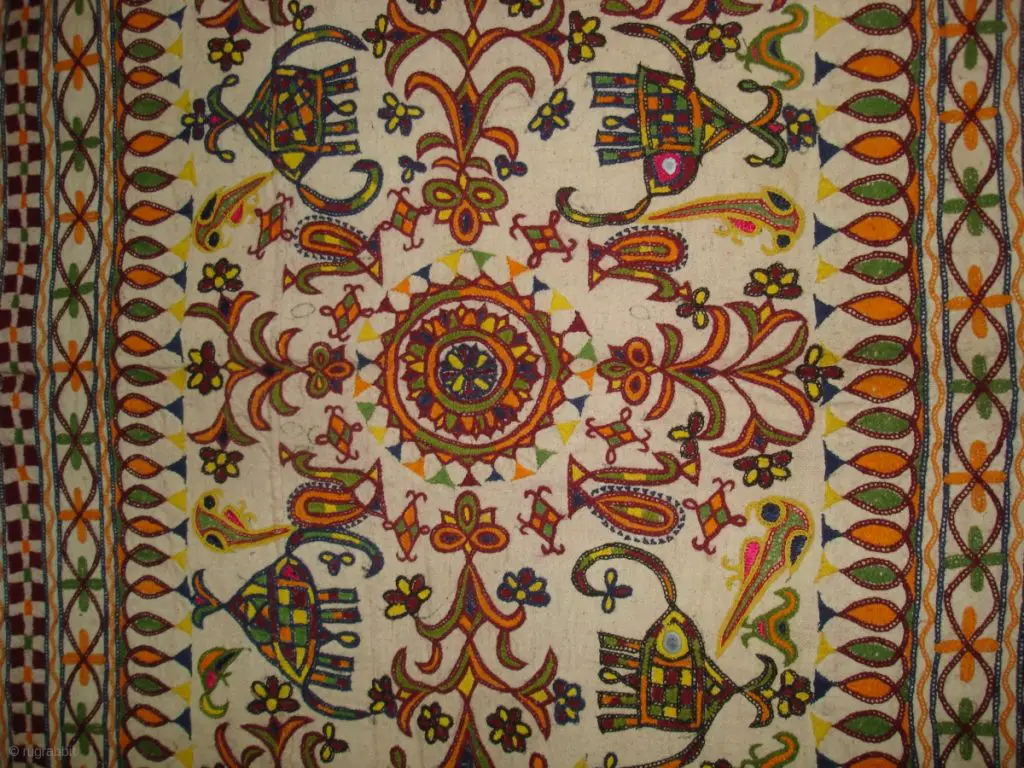
Dharaniya is Originated in Gujarat. This is mainly done on the wall hangings. It looks like a painting because of its use of colours. Dharaniya embroidery can be used as a decorating item in the interior to give an ethnic touch to the house.
9. KUTCH
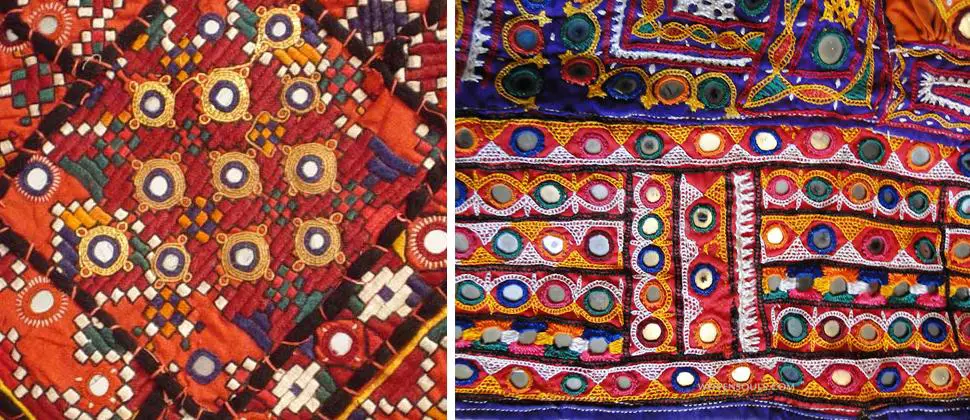
This embroidery is also from Gujarat. In this embroidery, bold and geometric patterns are stitched on silk. Kutch is also accompanied by mirror work, for a fusion look. Basically, the hub of this embroidery is Kutch region and Saurashtra. The usual colors used in kutch embroidery are green, ivory, indigo, black and white. The motifs are somewhere inspired by nomadic arts in this embroidery.
10. TODA

Originated in Tamil Nadu, this embroidery is similar to Kantha embroidery. The color pattern of toda embroidery is very eye-catching and gives a different edge to the fabric.
11. KASUTI
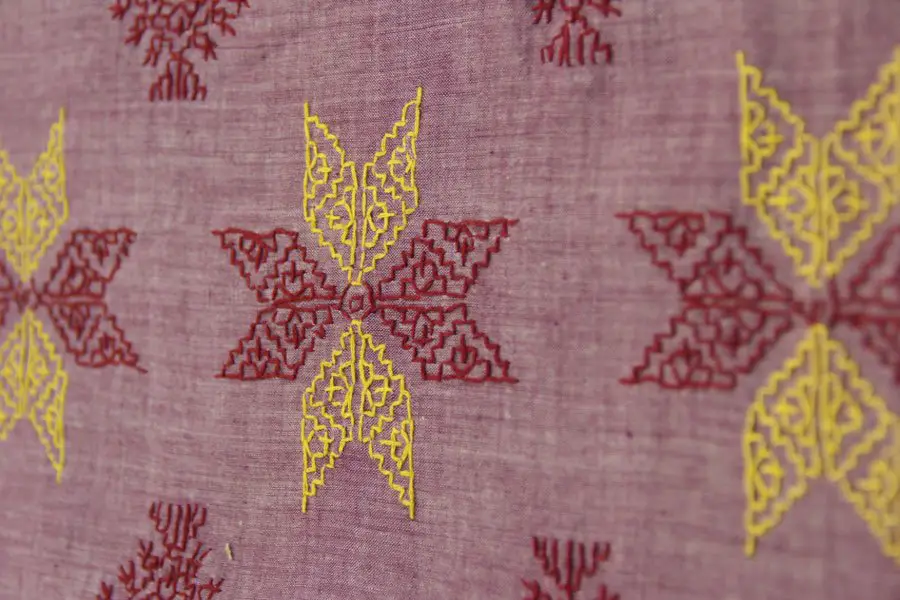
Kasuti embroidery is done with a single thread. The stitching is done without any knot so that both sides of the cloth look alike. This embroidery comes from Karnataka. This embroidery is very subtle and can be used in clothes for regular use. As this region is rich in temples and their styles, Kasuti embroidery is also inspired by those motifs of temples. The material used in this embroidery is cotton.
12. SHAMILAMI
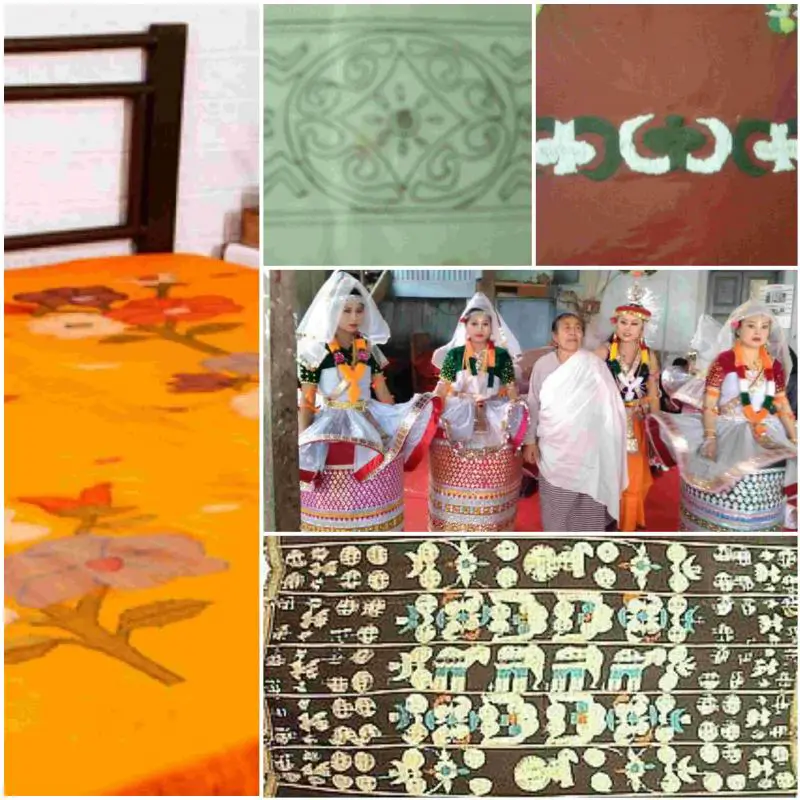
Shamilami originated in Manipur. This style of embroidery includes both weaving and embroidery.
13. BANJARA

Produced by the banjara tribe of MP and Lambada tribe of Andhra Pradesh, this embroidery is a mixture of applique done with mirror and beadwork. Banjara embroidery is very shiny and mostly used for decorative cloth pieces.
14. MUKESH
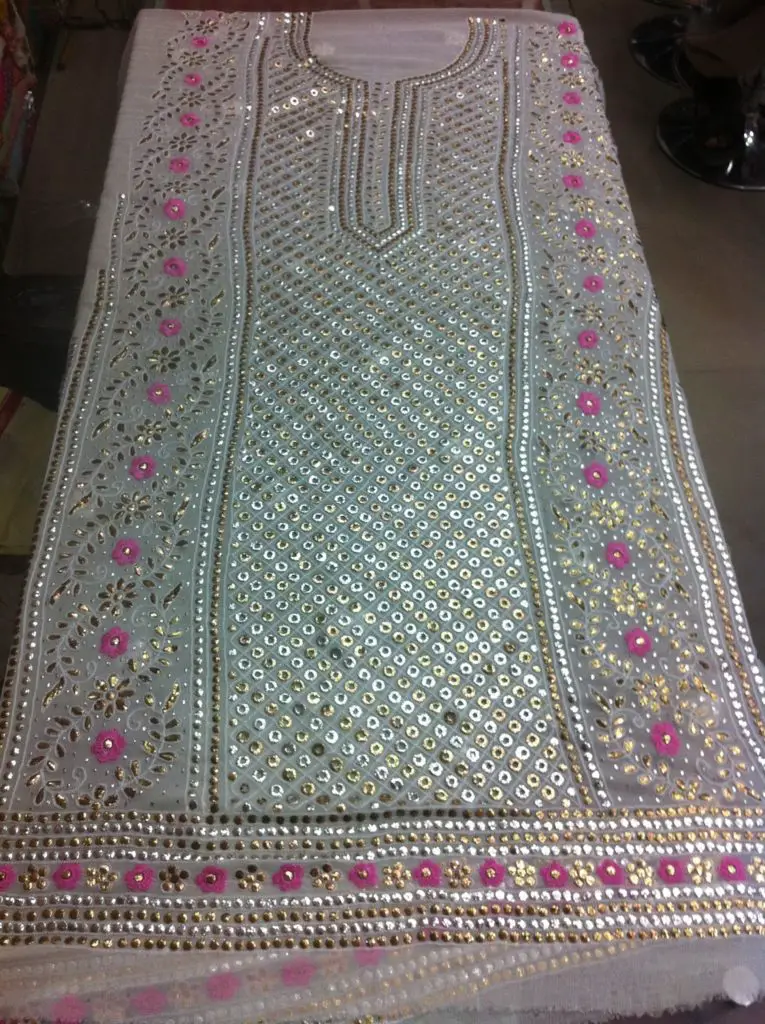
It is done by twisting metallic thread in UP. Mukesh embroidery is again a very shiny work because of the effect of the metals. This embroidery is used to enhance the beauty of Chikankari embroidery. However, it needs very much expertise and at the same time, it is labor-intensive. A very few kaarigaars are left who can actually do this embroidery now.
15. PIPLI

Pipli embroidery is based on patchwork. It is done on a plain background with bright colors. This originated from Pipli village, Orissa.
Read also – Top 15 Different Types of Parathas